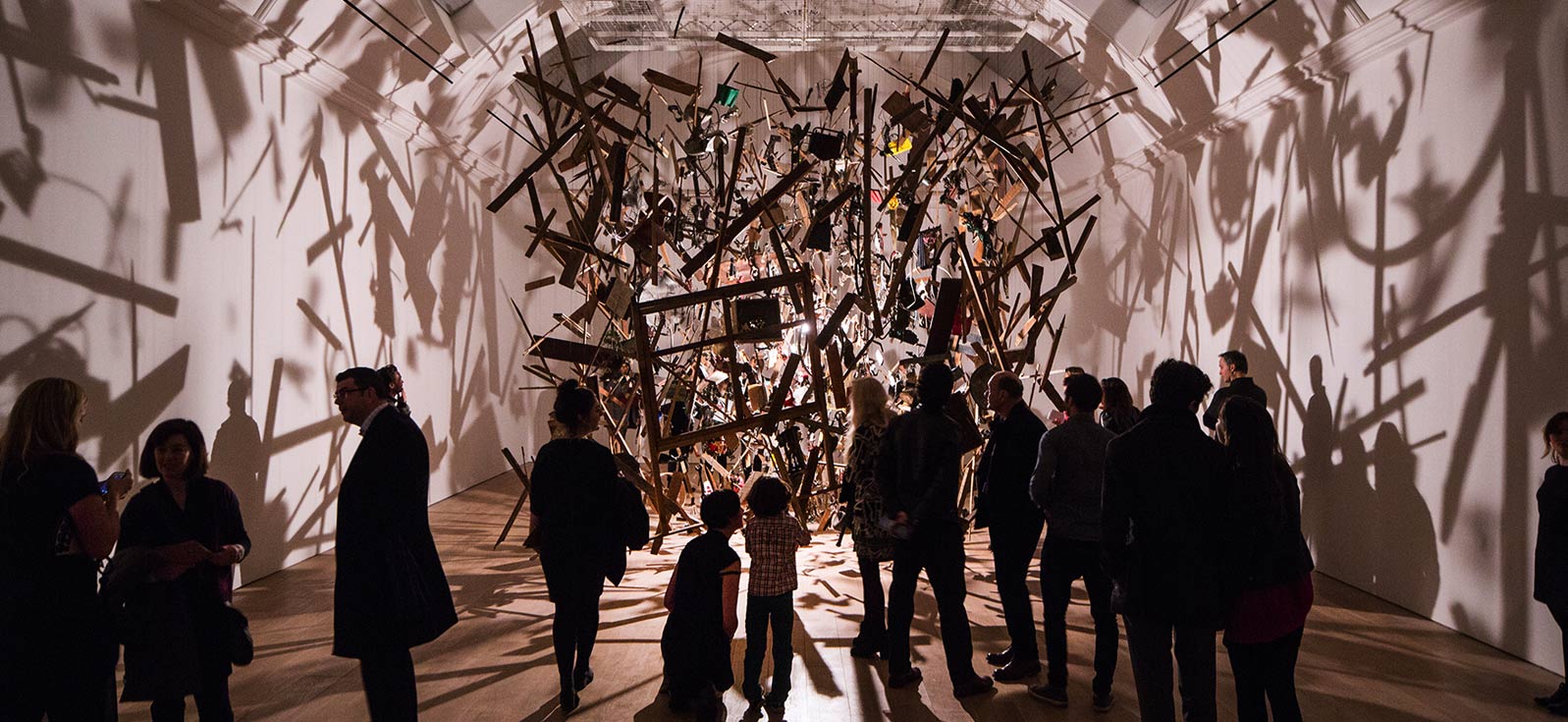Please note...
This page is no longer live and exists only for reference purposes, for this reason the content here may be out of date.
If you are looking for something specific at the Whitworth try using our site search

Cornelia Parker
A major solo show from one of Britain’s most acclaimed contemporary artists
This is a past exhibition which ran from 14 February to 31 May 2015.
The Whitworth reopened with a major solo exhibition from one of Britain’s most acclaimed contemporary artists, Cornelia Parker – and her work invites you to witness the transformation of ordinary objects into something compelling and extraordinary.
It is an extensive exhibition, one that features a wide range of work made during Parker’s career, from her signature piece Cold Dark Matter: An Exploded View (1991) alongside two important new commissions and many other new works.
Ahead of her new Whitworth exhibition, Cornelia Parker worked closely with scientists at the University of Manchester, most notably Kostya Novoselov, who, with Andre Geim, was awarded the Nobel Prize for the discovery of graphene - the world’s thinnest and strongest material.
Working with gallery staff, Novoselov took microscopic samples of graphite from drawings in the Whitworth’s collection by William Blake, Turner, Constable and Picasso, as well as a pencil-written letter by Sir Ernest Rutherford (who split the atom in Manchester). He then made graphene from these samples, one of which Parker made into a work of art to mark the opening of the gallery and exhibition. A Blake-graphene sensor, activated by breath of a physicist, set off a firework display which returned iron meteorite into the Manchester sky. This meteor shower marked a spectacular and unmissable opening to the new Whitworth.
The exhibition is supported by the Henry Moore Foundation and a generous group of Exhibition Patrons.
Cornelia Parker discusses Blakean Abstract

